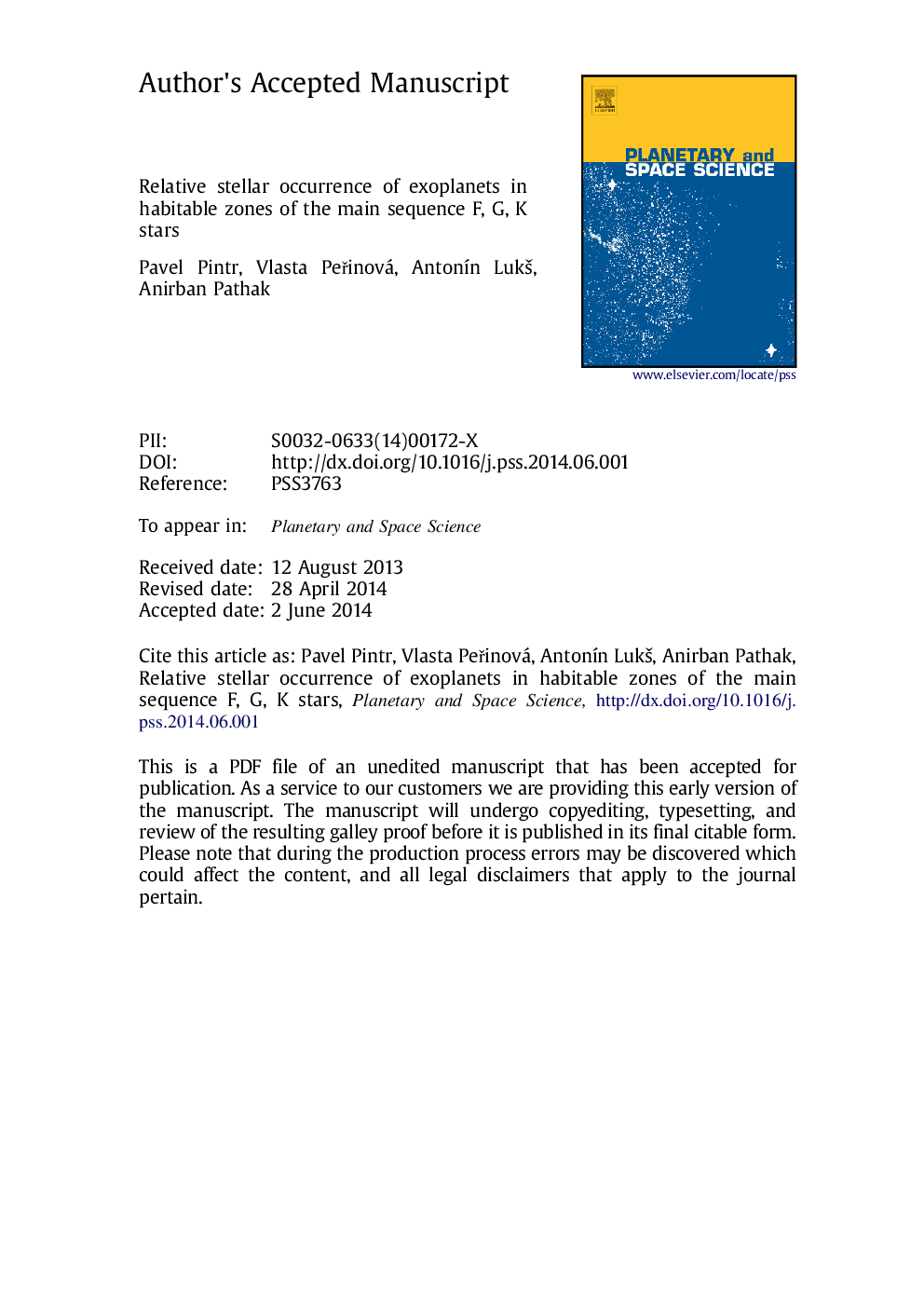| Article ID | Journal | Published Year | Pages | File Type |
|---|---|---|---|---|
| 8143669 | Planetary and Space Science | 2014 | 19 Pages |
Abstract
We have determined the stellar occurrence of exoplanets in the habitable zones of the main sequence F, G, K stars using the statistical analysis of confirmed exoplanets and that of the Kepler candidates. We predict the greatest occurrence of exoplanets in the habitable zones of the main sequence G stars. An optimistic definition of habitable zone gives 0.114 Earth-size exoplanets per star in habitable zones of the main sequence G stars for the confirmed exoplanets and 0.336â0.041â0.032 Earth-size exoplanets per star in habitable zones of the main sequence G stars for the Kepler candidates. The possibility of detecting habitable exoplanets is much higher for the star from the main sequence G stars, the exoplanet detection missions can be focused in the region around the stars of this spectral class.
Keywords
Related Topics
Physical Sciences and Engineering
Earth and Planetary Sciences
Geophysics
Authors
Pavel Pintr, Vlasta PeÅinová, AntonÃn LukÅ¡, Anirban Pathak,
